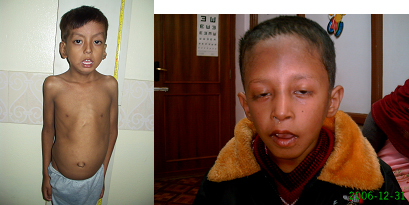Myesthenia Gravis
Myasthenia gravis (MG) is the most common disorder of neuromuscular transmission.
The hallmark of the disorder is a fluctuating degree and variable combination
of weakness in ocular, bulbar, limb, and respiratory muscles. Weakness is
the result of an antibody-mediated, T-cell dependent immunologic attack directed
at proteins in the postsynaptic membrane of the neuromuscular junction. There
are two clinical forms of myasthenia: ocular and generalized. In ocular form,
the weakness is limited to the eyelids and extraocular muscles. In generalized
form, the weakness may also commonly affect ocular muscles, but it also involves
a variable combination of bulbar, limb, and respiratory muscles. The Tensilon
test and ice pack test are used to diagnose the case. The initial therapy
for most patients with myasthenia gravis (MG) is an oral anticholinesterase
medication.
